NEIGHBORHOOD FERNS
5/2/20
Ferns are common in our neighborhood, but not very diverse. Of the five species, only one is particularly common and widespread.
Christmas Fern (Polystichum acrostichoides). This is by far the most common fern in our neighborhood, and it seems to do particularly well in moist valleys, such as along the banks of creeks. It has deep green foliage that spreads outward, making hemispherical clumps. The fronds make it through the winter, but they are replaced a fresh batch of fronds in the spring. On these newly formed fronds, there is an abrupt drop in leaflet size about halfway up, and these smaller leaflets are curled with orange sori on their underside.
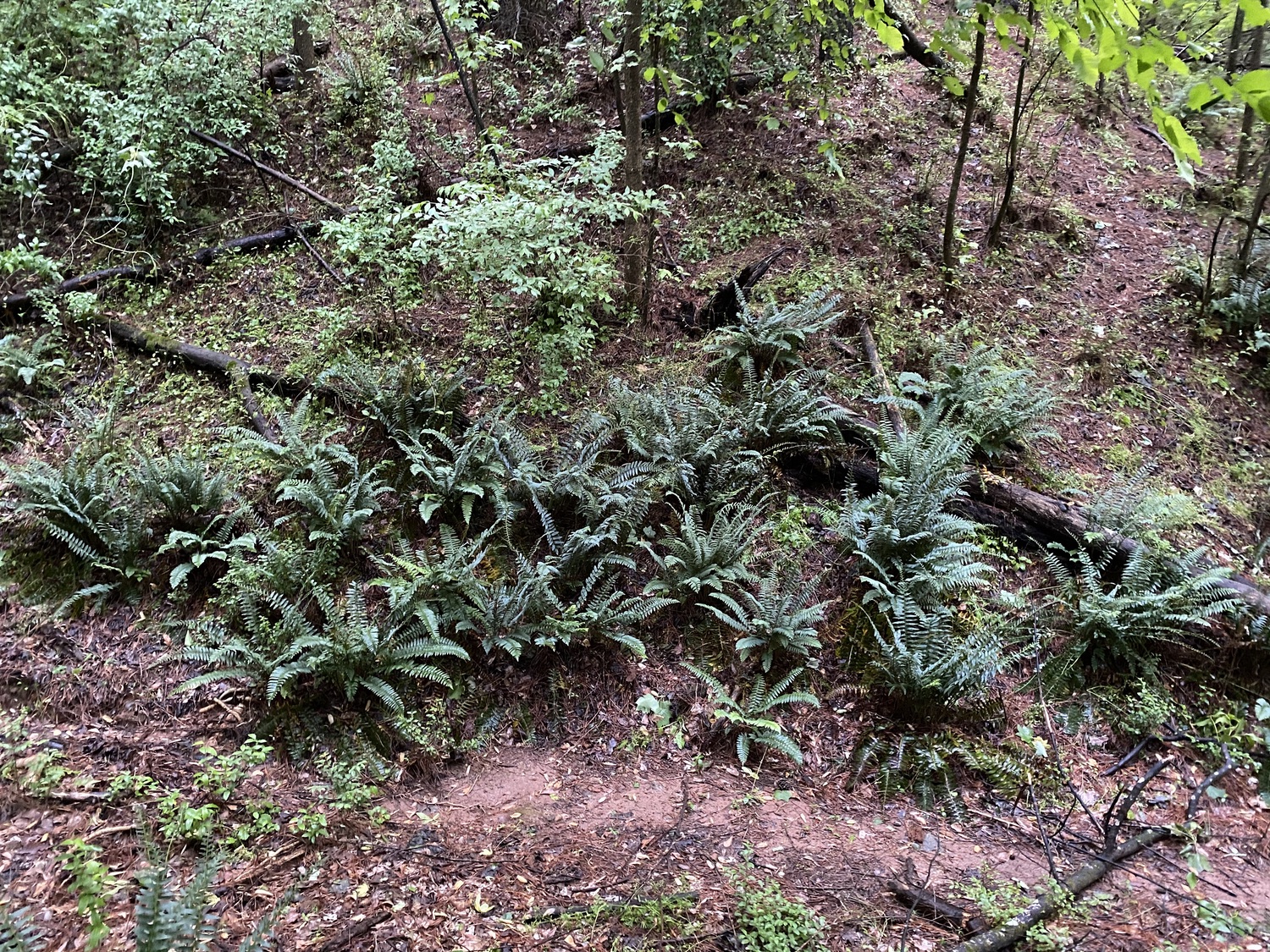
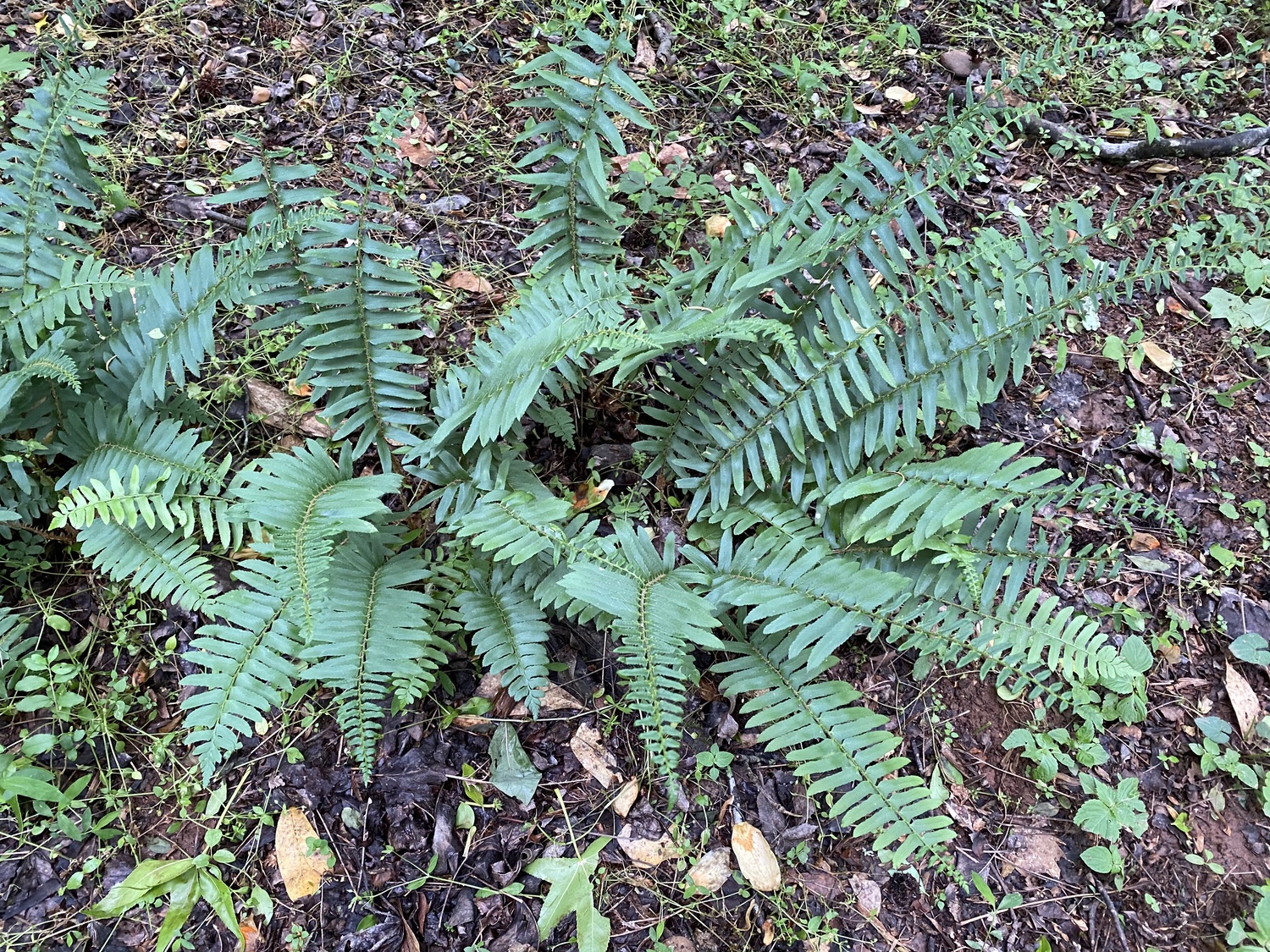
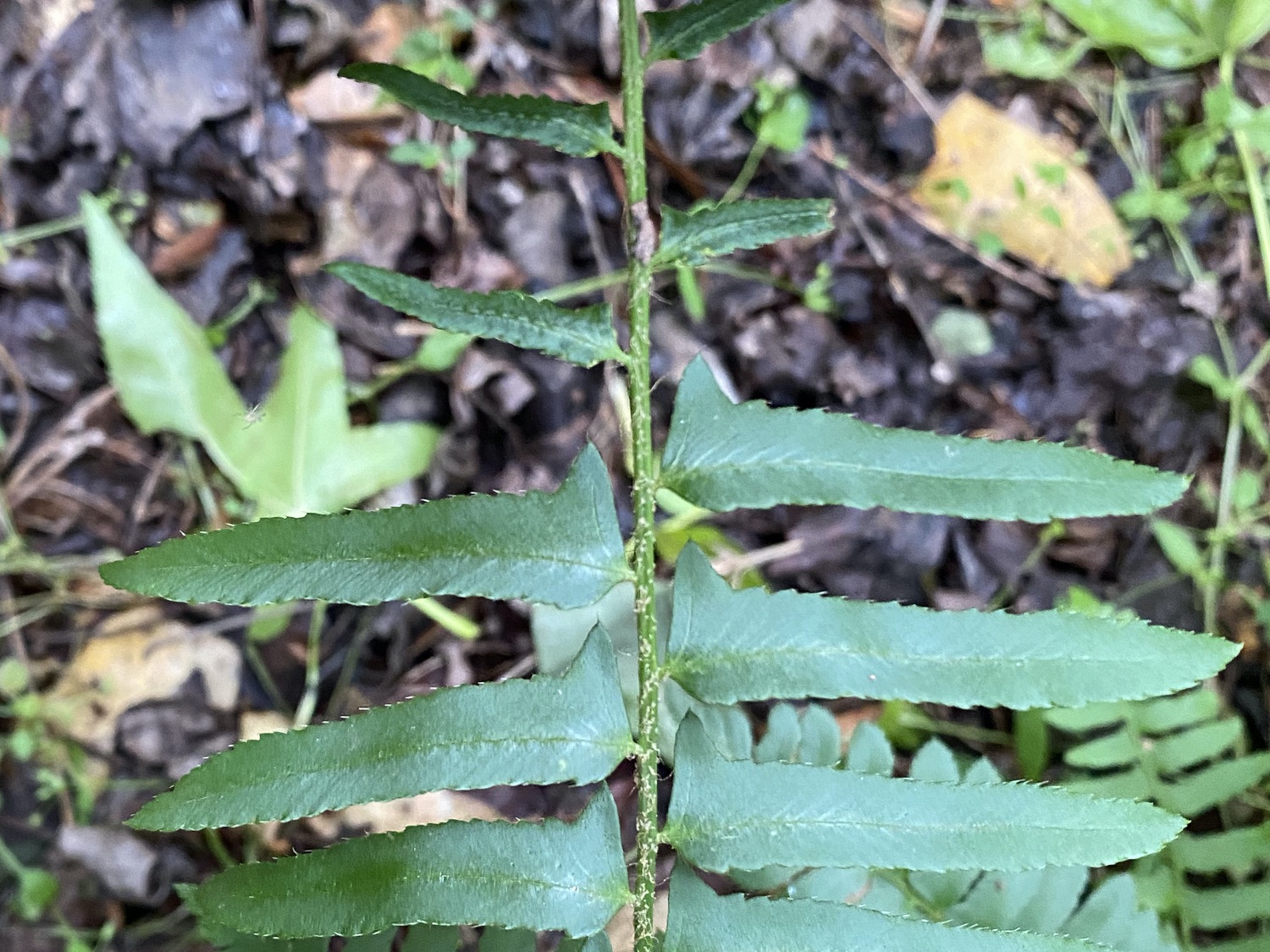
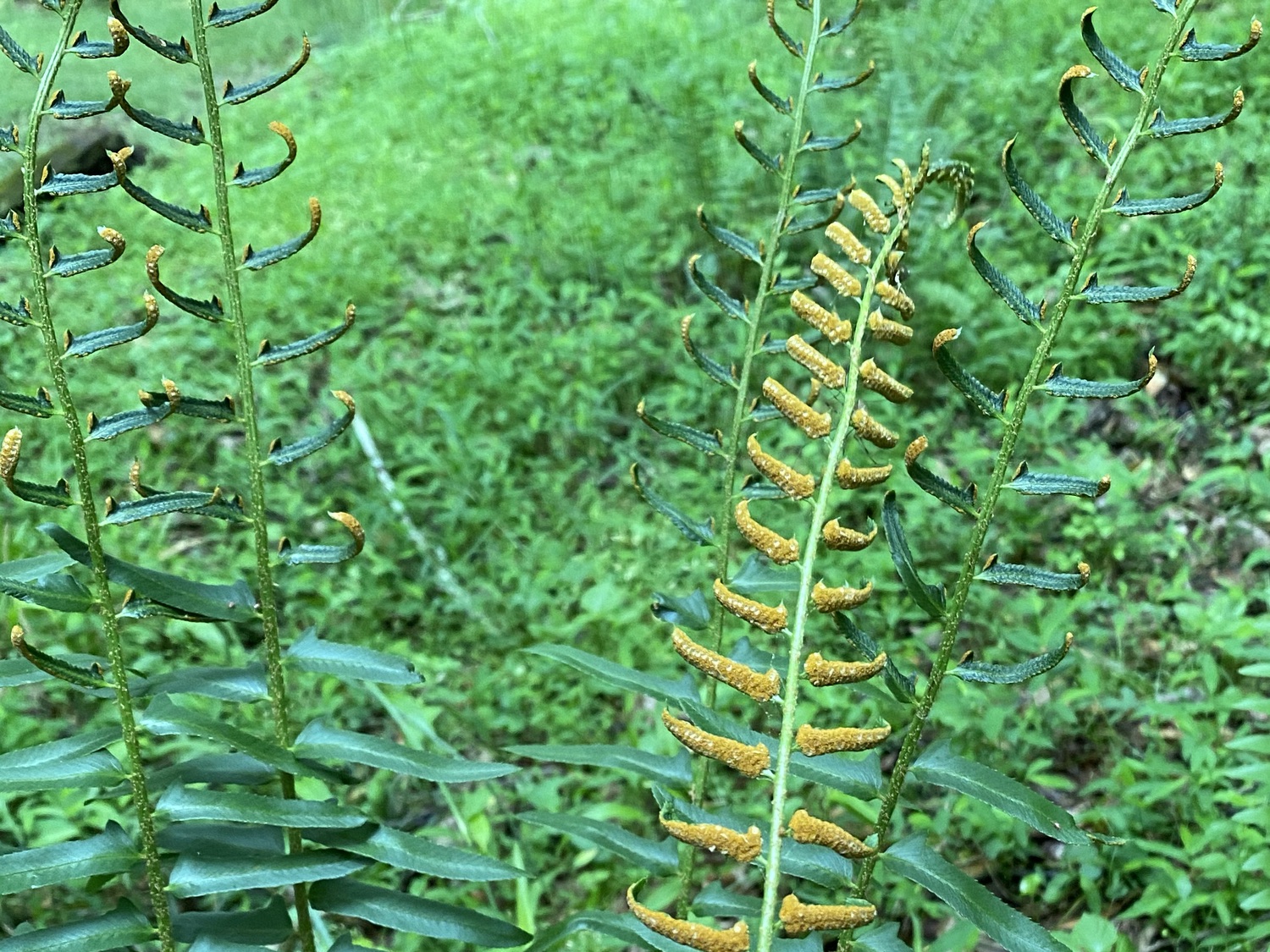
Ebony Spleenwort (Asplenium platyneuron). The fronds of this fern grow straight up, spear-like, in contrast to the Christmas Fern. The undersides of the leaflets have a white pattern where the spores appear. The leaflets are small near the base and the top, giving the frond an elliptical to lanceolate shape. The stem is dark reddish-brown (although green near the growing tip of the front), unlike the completely green stem of the Christmas Fern. The fronds are 30–40 cm tall, and about 3–4 cm wide.

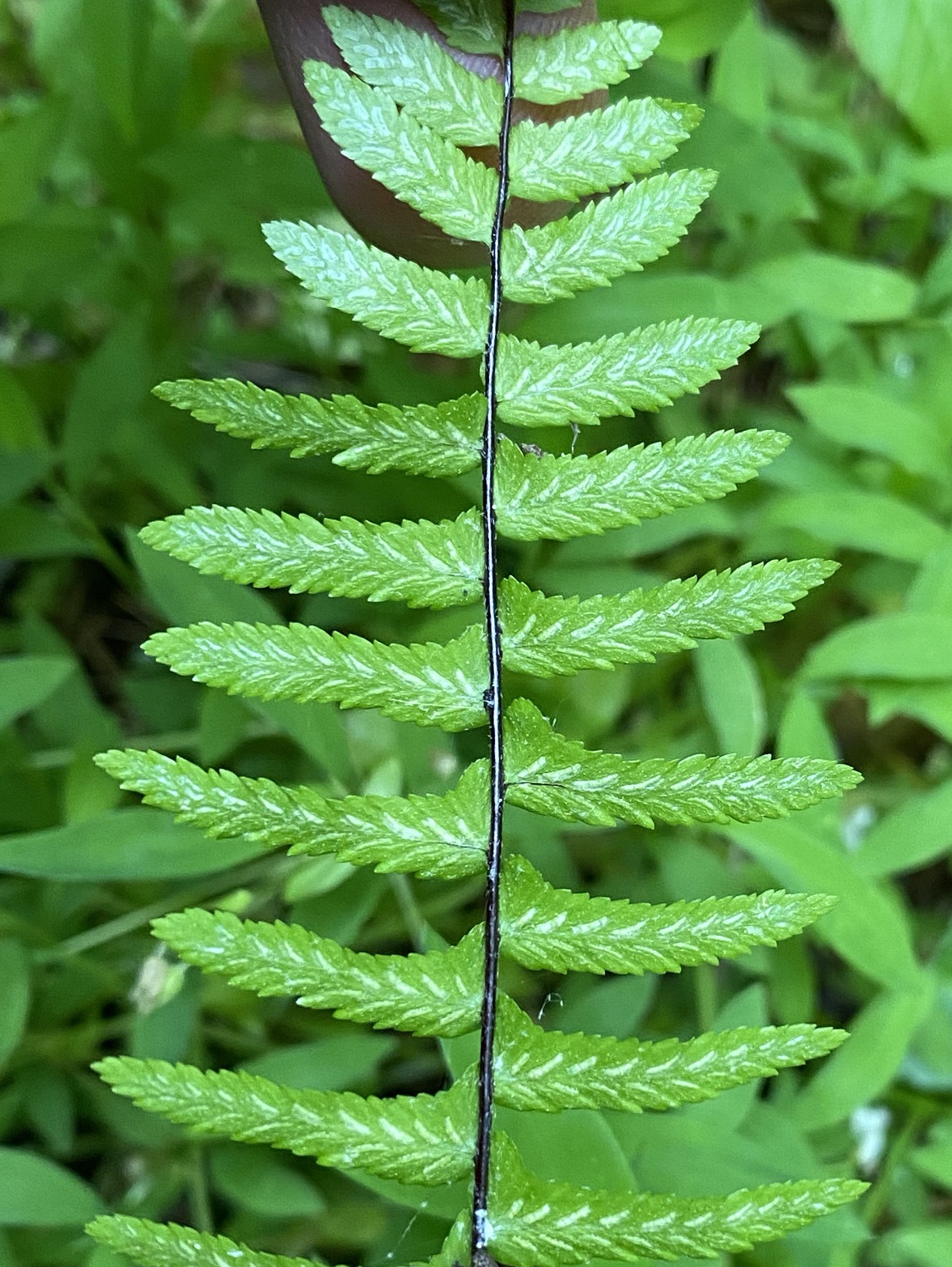
Under our downspout is a similar but much smaller version, which I originally thought was the Black-stemmed Spleenwort (Asplenium resiliens, also called the Little Ebony Spleenwort). This differs from the ones in our back yard by being much shorter (10– 15 cm), much narrower (about 1–1.5 cm), with numerous small erect fronds, as opposed to 3–5 erect fronds. The stem is the same color as the ones in our back yard (dark reddish brown), and that leads me to think that is not the Black-stemmed Spleenwort. These apparently different plants are actually the two frond types of the Ebony Spleenwort: the smaller ones are vegetative fronds and the larger ones are reproductive fronds. Both fronds can occur on the same plant.
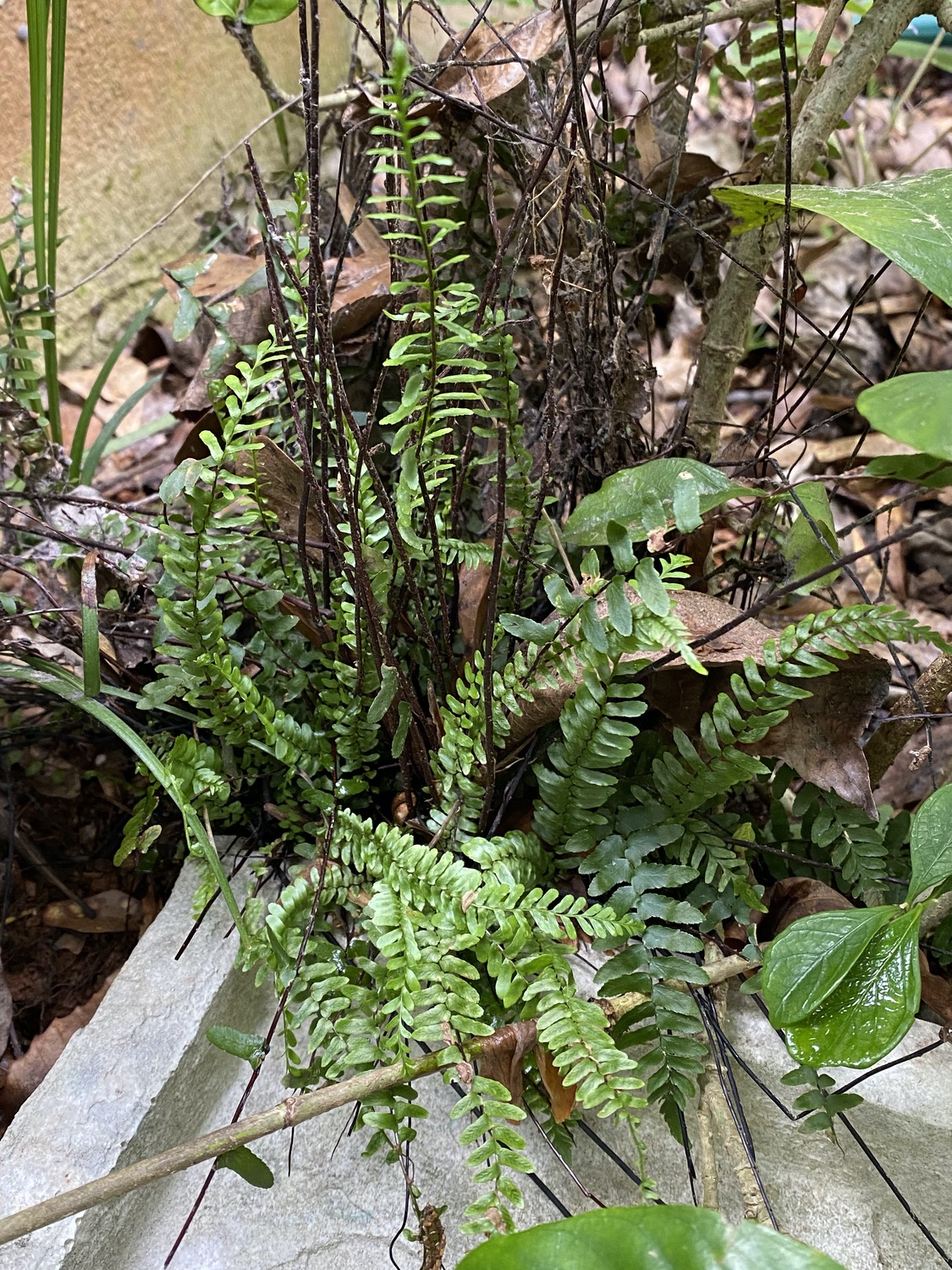
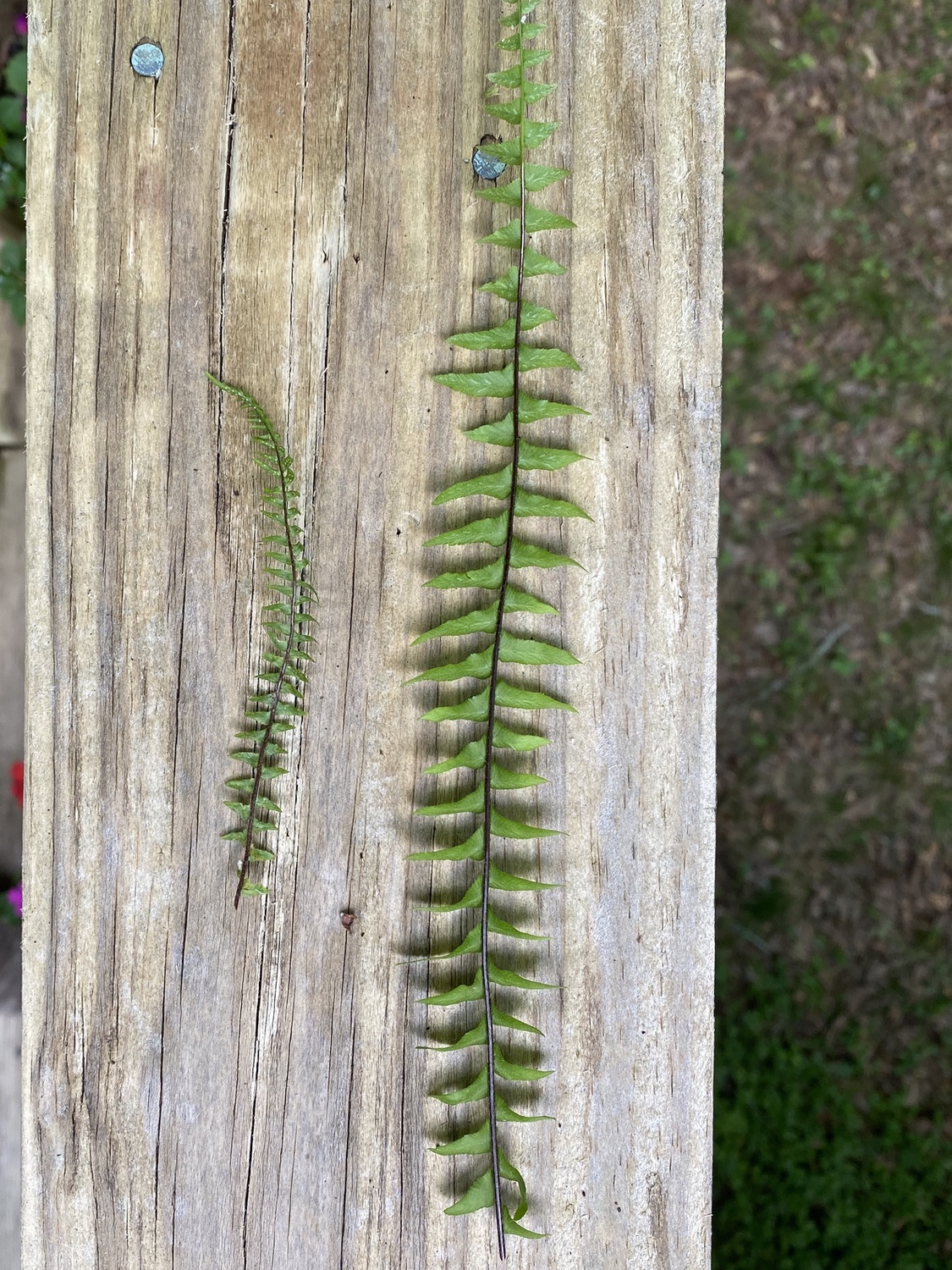
Southern Lady Fern (Athyrium filix-femina). These have pale green, finely divided fronds. The stem has a shallow groove on the upper side.
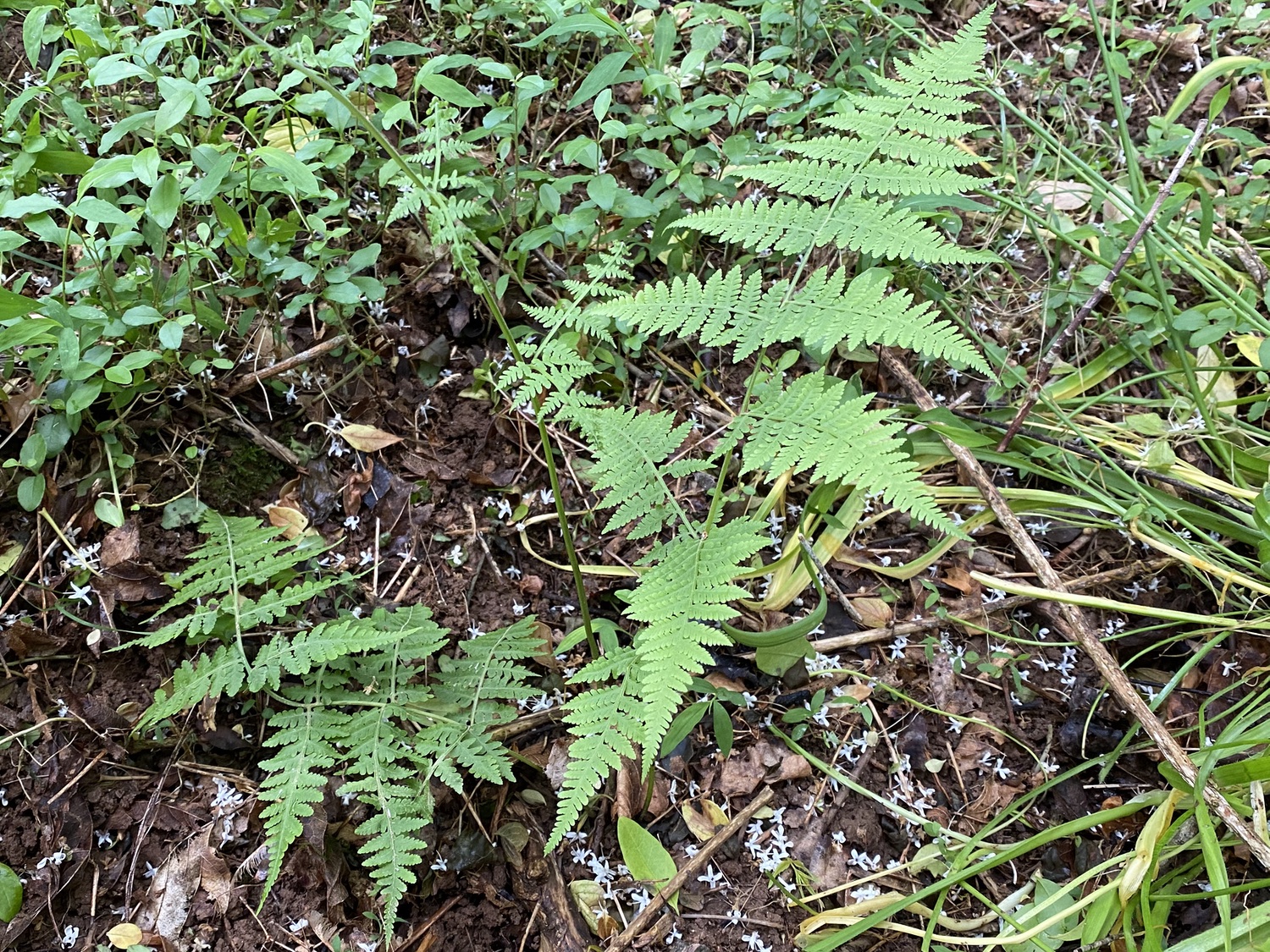
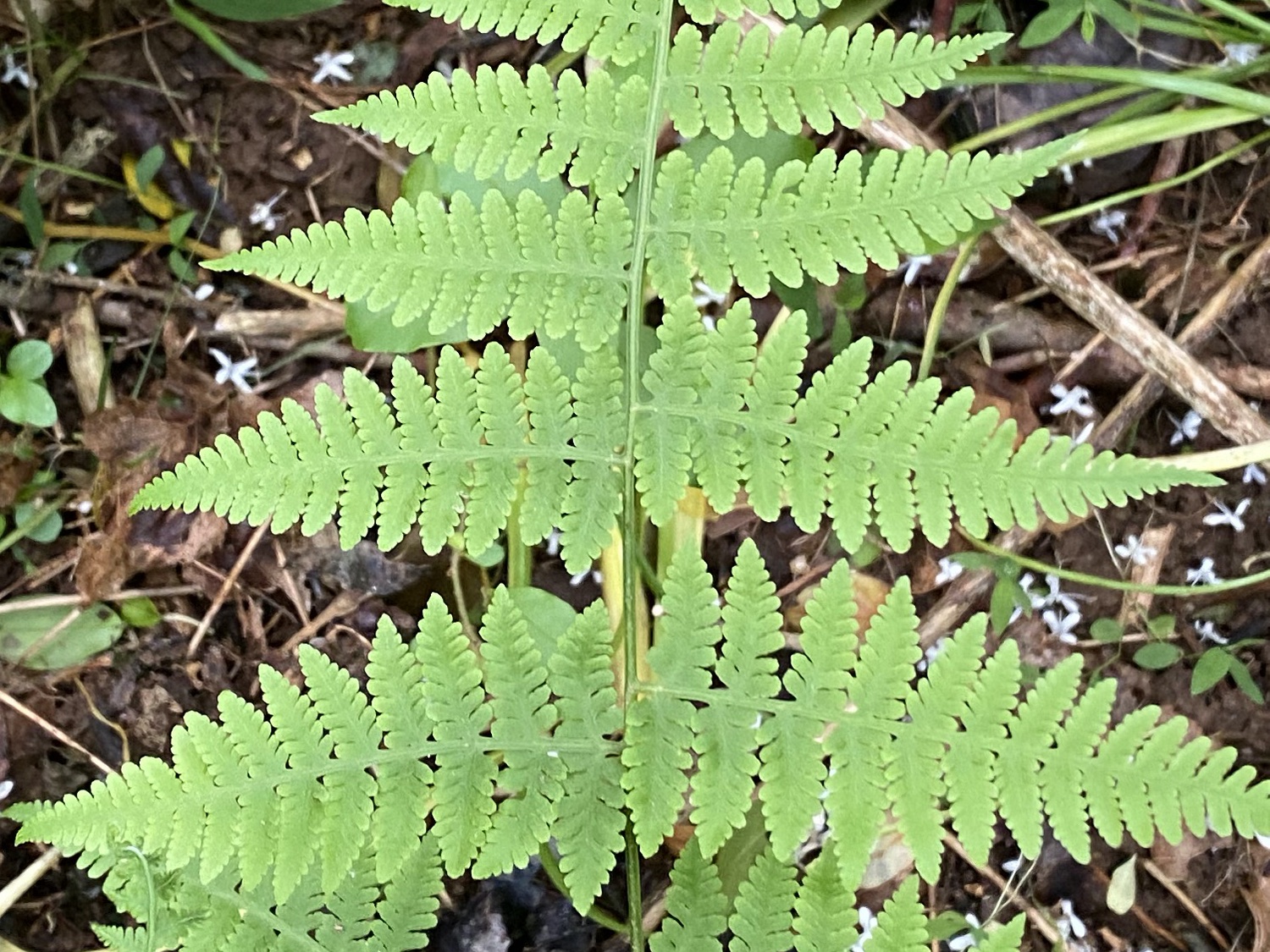
Sensitive Fern (Onoclea sensibilis). I discovered this one after my initial post, growing along the banks of the North Oconee River. It has large, medium to pale yellowish green, triangular fronds. The pinnae are not fully separated (pinnatifid), and the leafy part continues along the sides of the veins.

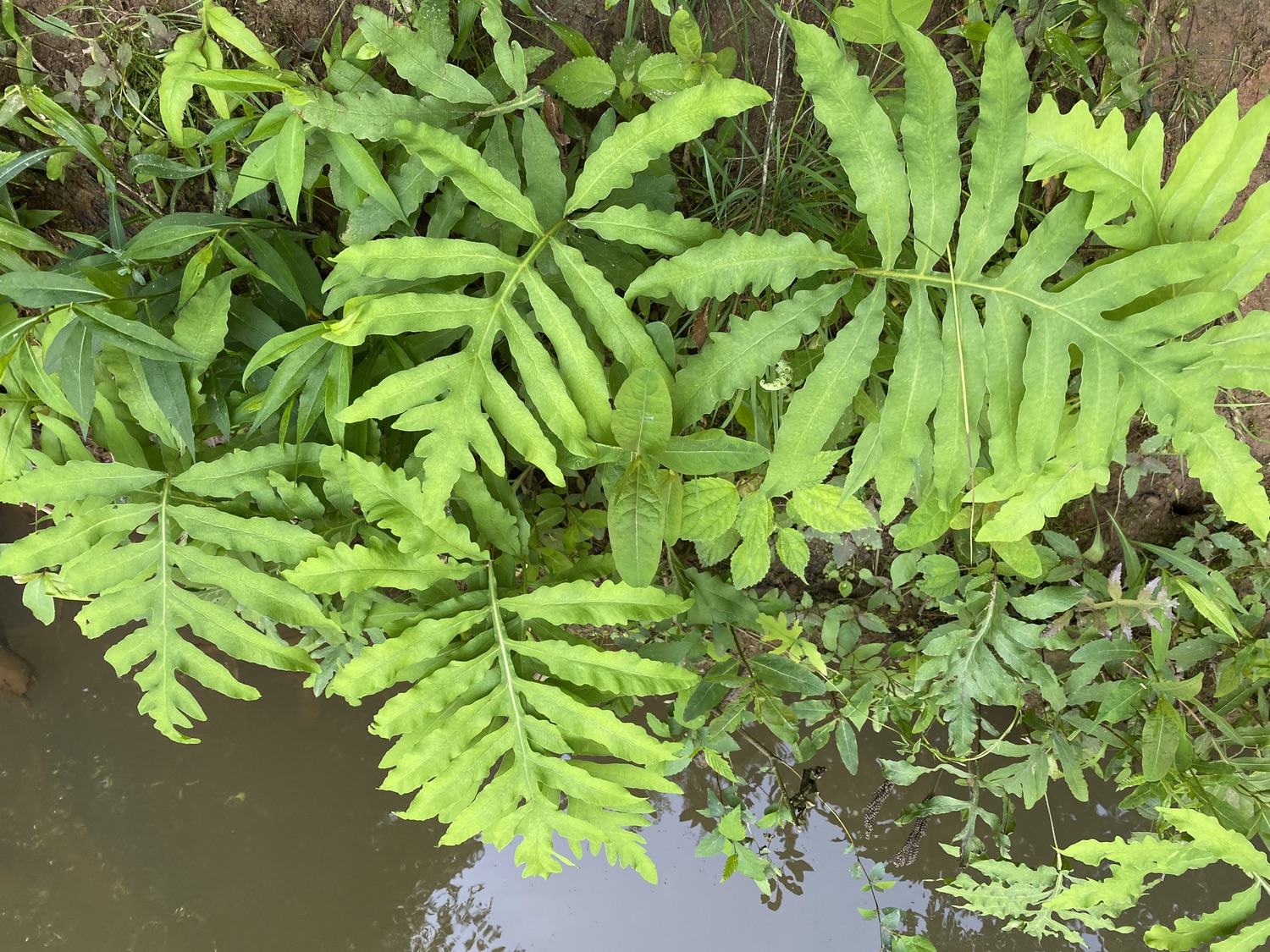
Marginal Wood Fern (Dryopteris marginalis). This is another one I discovered after my initial post. I missed it because it is growing along the shaded edge of our front garden, although I know from where it is that it is not one that I have planted. It has large fronds, up to 80 cm (2½') long, which droop into large spreading canopies. The spore bodies (sori) on the undersides of the fronds look like small white c’s, are near the margins, and lie close to the midvein.
I am not completely sure about the species, but I base my identification on the species that are common in Georgia, those that tolerate acidic soils, relatively simple fronds (pinnate-pinnitifid), the placement of the sori, and the relatively modest size compared with other Dryopteris species.

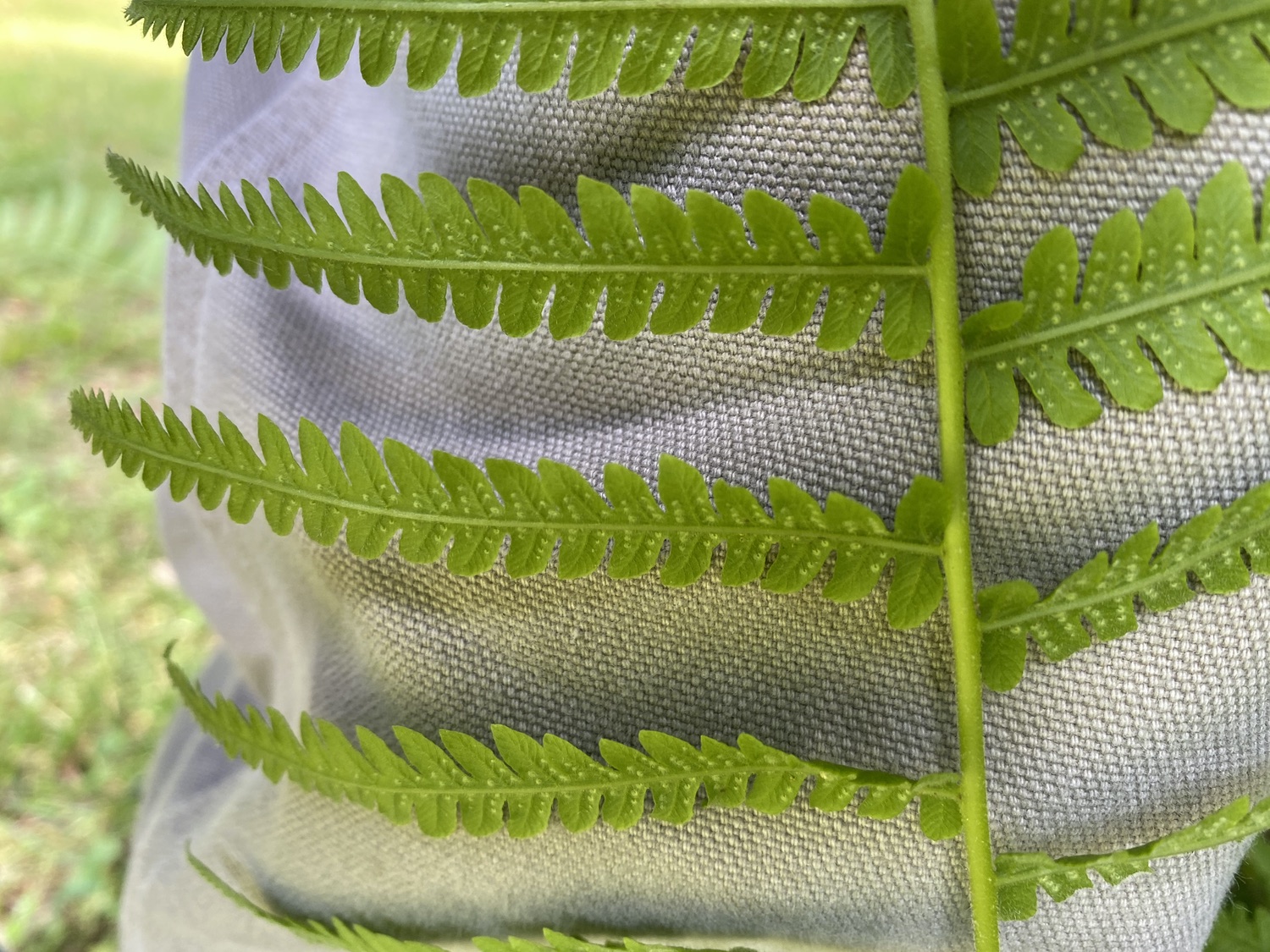
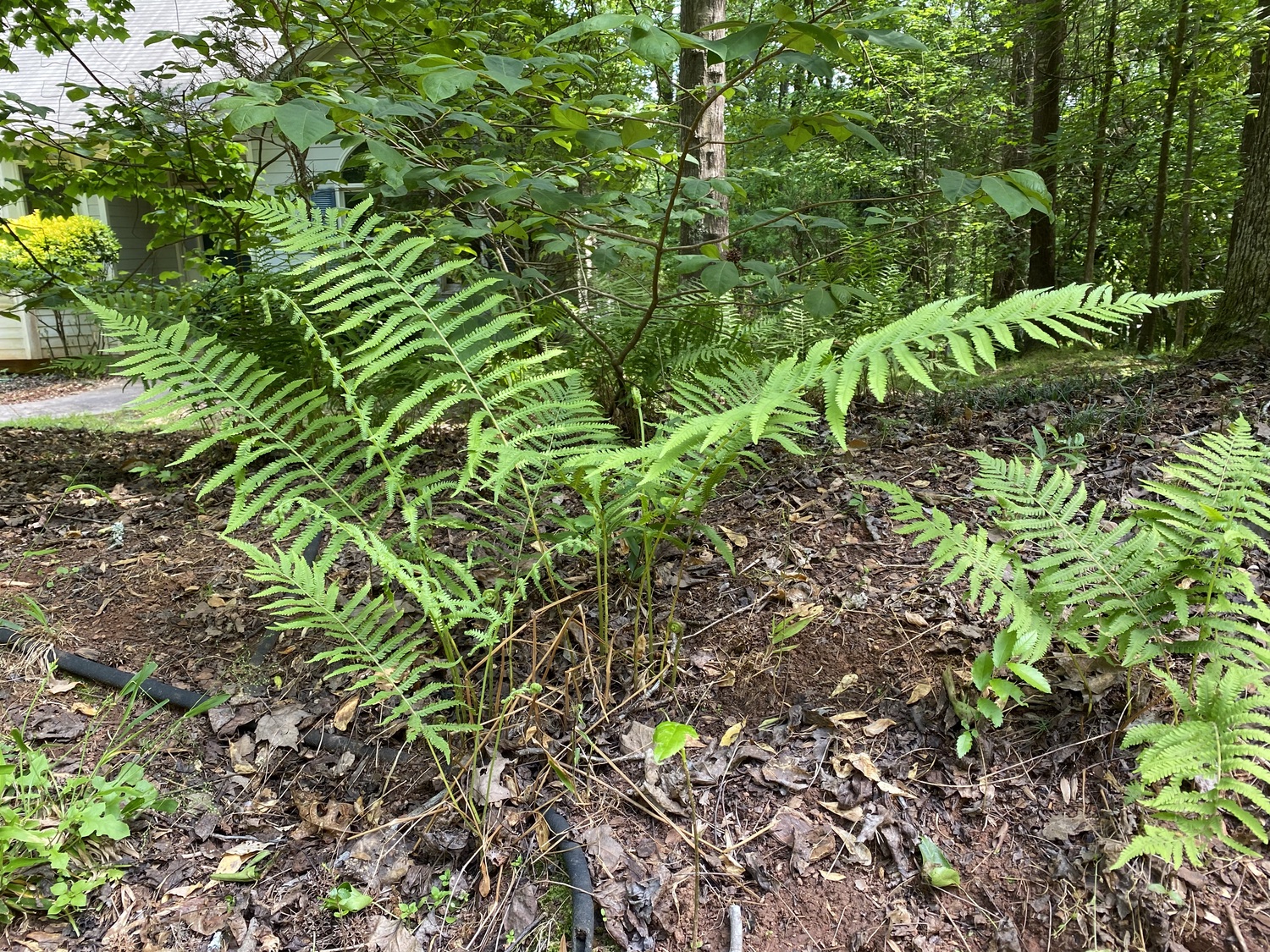
References
Miller, J.H., and K.V. Miller. 2005. Forest Plants of the Southeast and their Wildlife Uses. University of Georgia Press, Athens, Georgia.
Wade, G., e. Nash, E. McDowell, T. Goforth, B. Beckham, and S. Crisafulli. 2017. Native Plants for Georgia. Part II: Ferns. University of Georgia Extension Bulletin 987-2, Athens, Georgia.